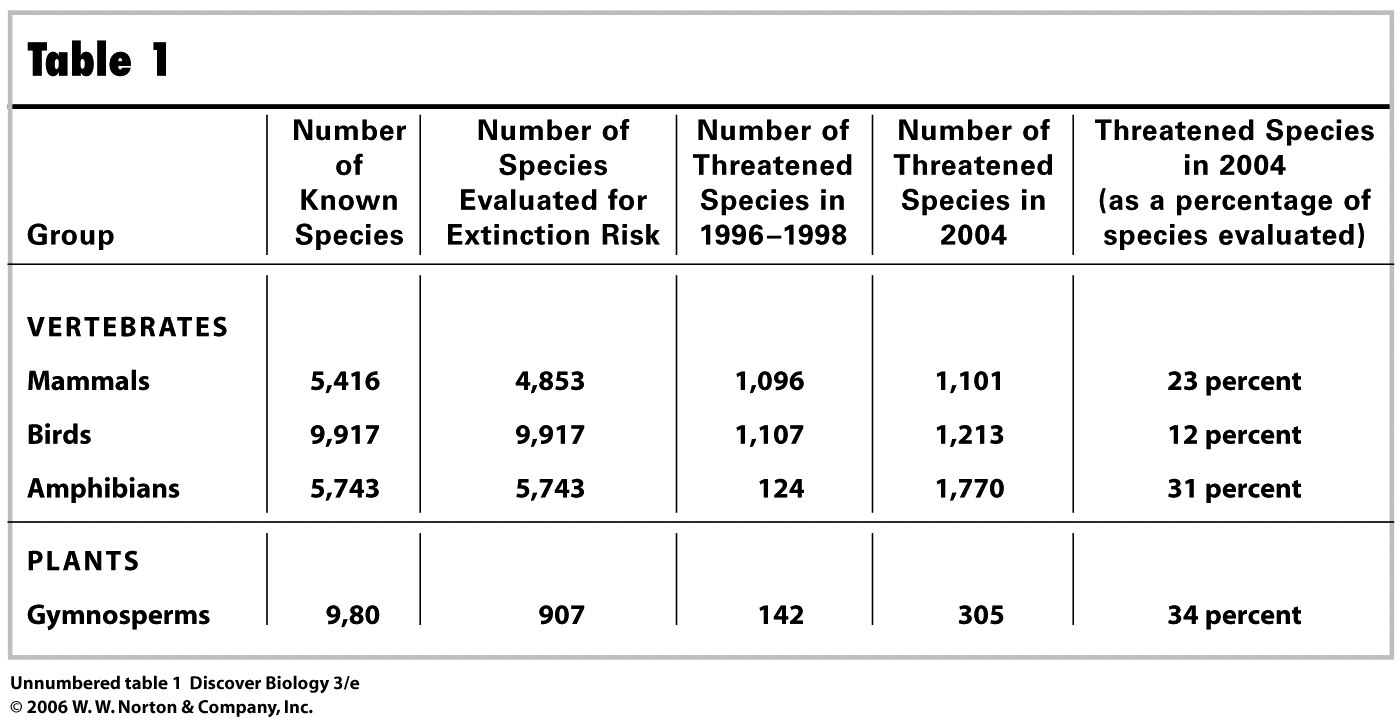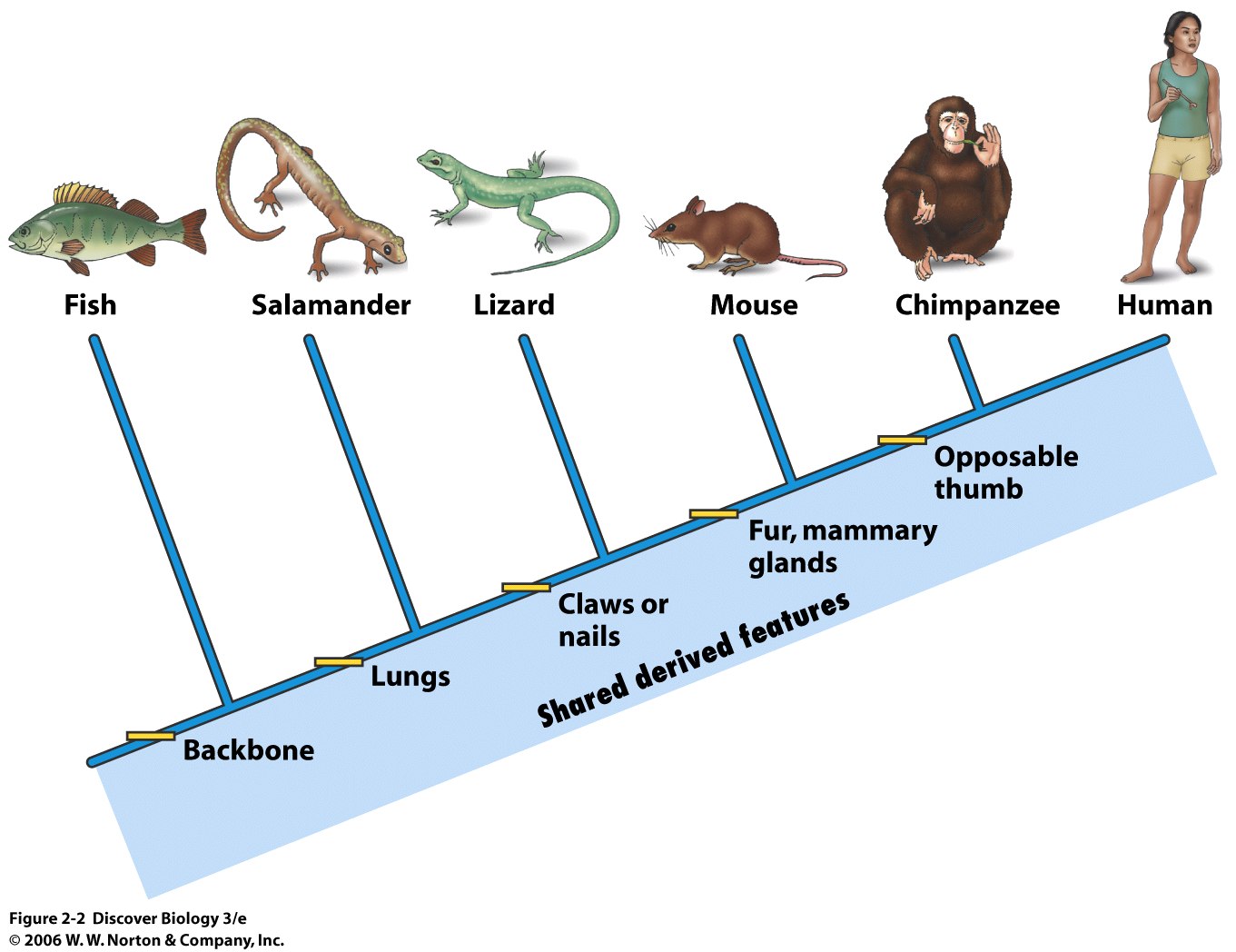
Lecture 28 Preview
Support for the Theory of Evolution by Natural Selection Came from Many Areas of Science
Support from Cell Biology studies: Basic similarities are seen in cells and molecules of all organisms.
What acts as a selective barrier between the inside and the outside of all cells?
What molecule carries information passed from one generation to the next in all cells?
What molecule carries energy released from glucose and then releases energy for movement and synthesis in all cells?
What are the two processes by which all cells use information in nucleic acids to make proteins?
Fossils = mineralized remains or impressions (e.g. tracks) of organisms, usually in layers of rock (sedimentary rock)
Record incomplete
only some conditions right for preservation
only some parts preserved
only some found millions of years later
Dating of fossils
absolute age by chemical composition (radioactive isotopes)
relative age by depth of rock layers
Patterns
different species appear at different times in the fossil record
some species go extinct
Based on "descent with modification" what should appear first: complex or simple forms?
First
appearance in fossil record (millions of years ago)
Prokaryotic cells 3500
Protists 1500-1800
Multicelled eukaryotes 1000
Vertebrates 550
If Evolution by Natural Selection occurs, different species should have some shared features from their common ancestor (shared derived characteristics). Also, since differences take time to accumulate, two groups sharing a most recent common ancestor farther back in time can accumulate more differences than two groups sharing a most recent common ancestor closer to the present. Or put another way, two groups with a most recent common ancestor closer to the present would share more derived characteristics.
Cladograms are branching diagrams to represent evolutionary relationships among organisms, based on shared, derived characteristics. They provide insight on
· which organisms share a most recent common ancestor closer to the present time
· which shared derived characteristics originated earlier and later
· which characteristics were important in the splitting off of groups
Organisms can be placed in cladograms, showing key shared derived characteristics allowing a new group to branch off; the relative time of branching agrees with relative time of appearance of the new group in the fossil record. More similarities are observed between organisms that have a common ancestor closer to the present (that branched off from each other more recently).

Which of these organisms share an ancestor closest to the present time?
Which characteristic (character) should appear earliest in the fossil record?
DNA of organisms with most recent common ancestors closer to the present (based on fossils) is more similar. DNA of organisms with most recent common ancestor farther back in time is more different (has accumulated more differences).
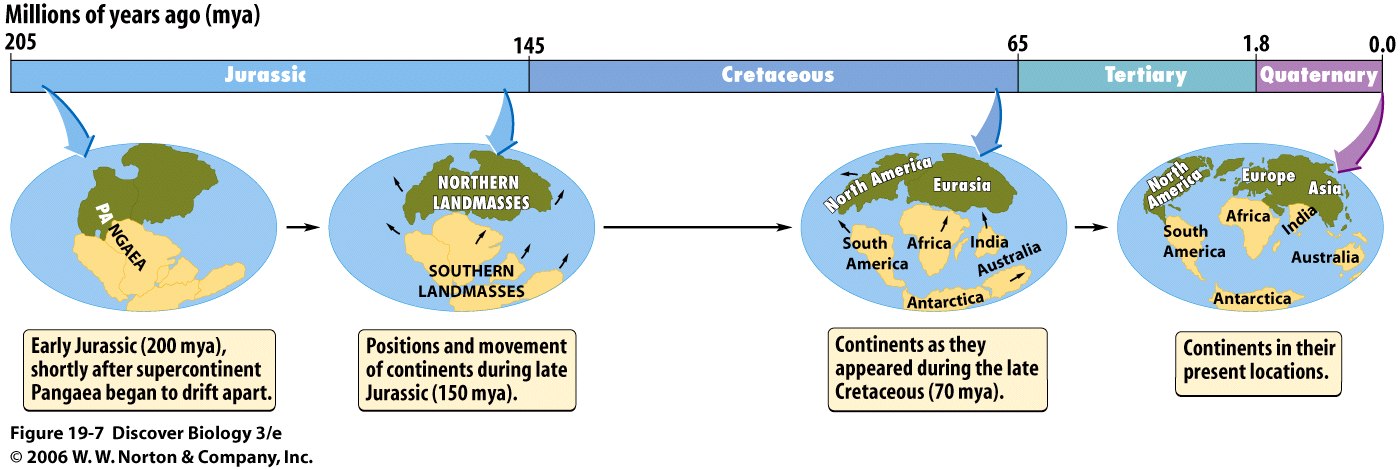
How might continental drift (plate tectonics) lead to formation of new species?
Organisms also alter the environment.
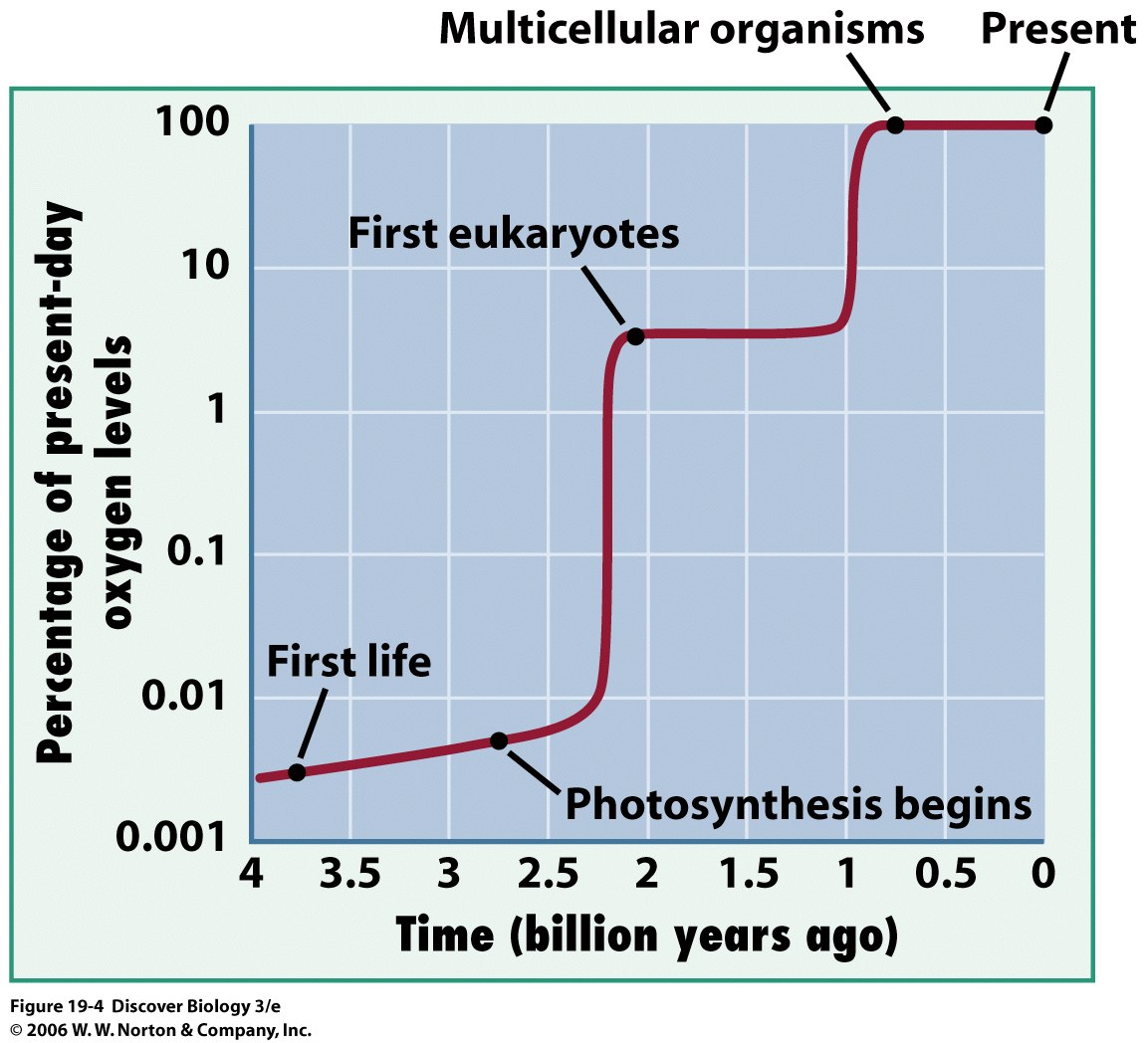
Life forms have appeared over the last 3.5 billion years
Humans have been on earth only a small fraction of the earth's lifetime.
In the history of life there have been
mass extinctions
evolutionary radiations
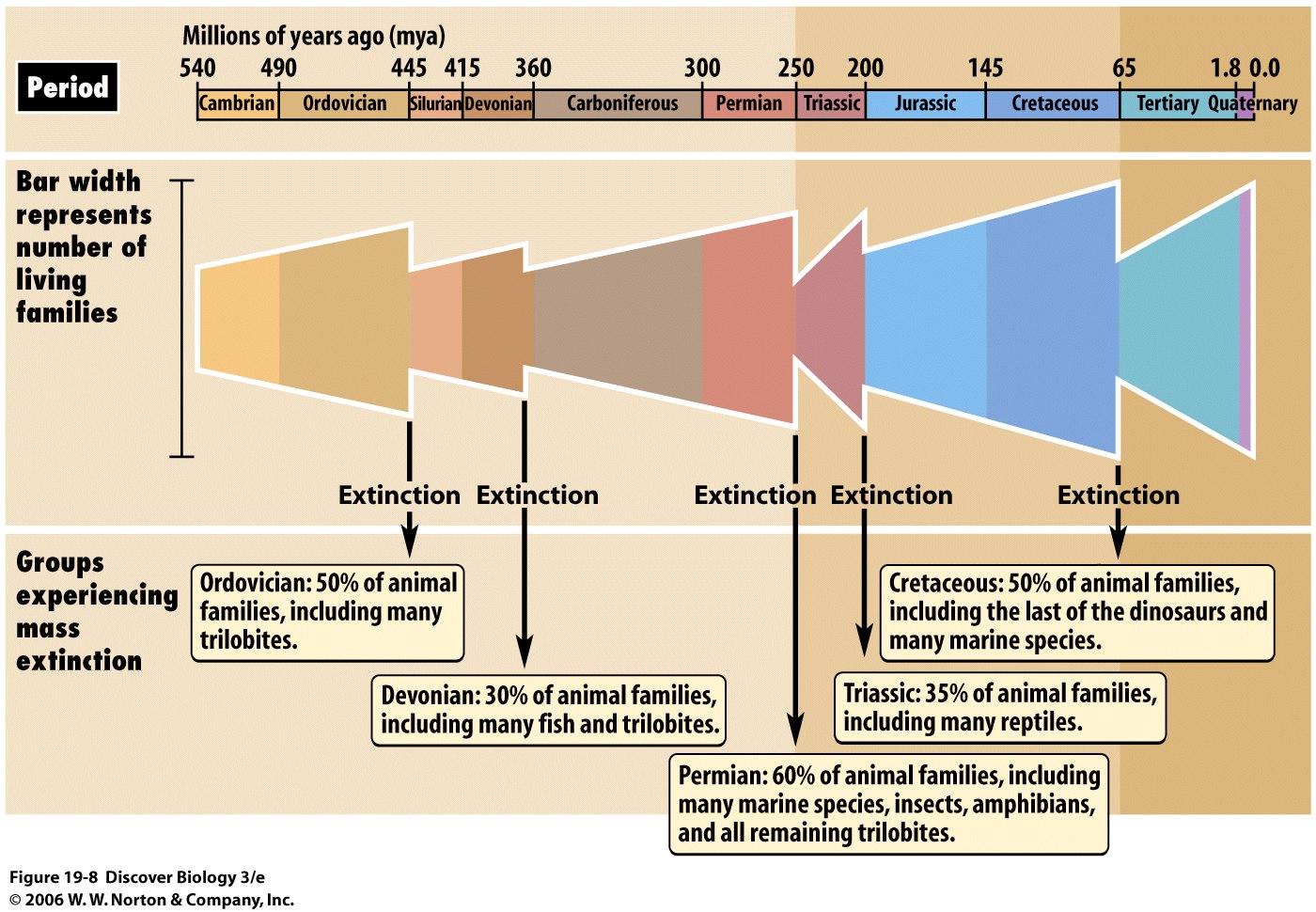
Humans have an increasingly large influence on the fate of other species.
